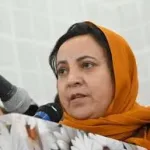PROF (DR) ASHISH GUPTA
In the healthcare arena, India saw tremendous changes in the last eleven years under the able leadership of Narendra Modi. The healthcare systems were really more accessible to an average citizen in particular to the poor and those dwelling in rural areas. The vision was very clear: No one in India should face any suffering due to lack of medical care.
One of the transformative initiatives has been the launch of Ayushman Bharat in 2018. It is popularly termed as the world’s largest government-sponsored healthcare insurance scheme. Apart from granting health insurance of Rs 5 lakh to a family per annum, it covers more than 50 crore poor and vulnerable Indians. Thus, lives have been saved and families protected from falling into poverty due to their medical costs.
In 2024, Prime Minister Narendra Modi passed a historic ruling to offer the Ayushman Bharat scheme to all those aged 70 and above, irrespective of income. Under this historic decision, senior citizens have been assured that if they ever face health challenges of any shape or form, monetary concerns need not bother them. It stands for this concern he has for senior citizens of India and his commitment to inclusive welfare.
Ayushman Bharat does not merely cover health insurance. It intends to provide preventive care using 1.5 lakh Health and Wellness Centres pan-India. These centres provide free primary care, early diagnosis, and treatment for frequently encountered illnesses; thus reducing the burden on tertiary care hospitals and ensuring faster care at the local level.
In order to make medicines affordable, Modi government extended the Jan Aushadhi scheme. At these outlets, high-quality generic drugs are sold at prices 50–90% below those of branded drugs. This has indeed been very impactful for millions who require regular medication and cannot afford the branded ones. The government also gave birth to AMRIT pharmacies and halved the prices of stents and knee implants as bold steps.
The reduction in prices is a major benefit of up to 70%, bringing relief to patients with cardiac problems and joint-related surgeries. It is a clear indication that the government is addressing the issue of high medical costs directly. The creation of medical infrastructure has received a huge fillip.
The number of AIIMS (All India Institute of Medical Sciences) hospitals went from 7 to 23. These are top-level government hospitals that provide super-specialty treatment. The establishment of new AIIMS promises that the government is truly moving ahead towards dispersing world-class healthcare facilities at varied locations in India.
Medical education has developed rapidly and undoubtedly, the number of medical colleges, and MBBS seats have more than doubled. In 2014, there were just over 50,000 MBBS seats which have now crossed 1.15 lakh. Also, the number of postgraduate (PG) medical seats has also increased tremendously. This surely will result in more trained doctors for years to come.
To know the extent that the Government understands the importance of technology and healthcare, we can look at the Pradhan Mantri Digital Health Mission wherein every citizen in the country will get unique digital health ID allowing Doctors to look up any patient’s medical records from anywhere across the country, providing better diagnosis and treatment opportunities.
During the pandemic and later, the e-Sanjeevani telemedicine platform allowed lakhs of people to access doctors online from the safety of their homes. Not only that, it has helped many more people in villages and small towns, where doctors may not be extensively available. Even now, over 34 crore consultations have been conducted through e-Sanjeevani.
Mission Indradhanush was implemented to increase vaccination coverage. This campaign plans to vaccinate every child and pregnant women left out of the regular immunization programme. It has resulted in saving lives and stopping the spread of deadly diseases like measles and polio. This has saved many lives and prevented the spread of deadly diseases like measles and polio.
Following that, the U-WIN portal has been created and applies various record keeping vaccines for the purpose of tracking children and pregnant women. The U-WIN system is an important step forward in the ability to track vaccines provided, and ensuring that no person is missed. Over 23 crores vaccines have been tracked through the system, attesting to the magnitude and efficacy of the work. Expectant mothers receive free antenatal checkups as part of the broader Pradhan Mantri Surakshit Matritva Abhiyan.
During these checkups, pregnancy complications can be detected and treated. Providing consistent health care to soon to be mothers, the program is significant in driving down the number of maternal deaths. The POSHAN Abhiyan, another notable program developed during Modis’ time, is targeting malnutrition in both women and children. With the support of mobile apps, and local monitoring systems, the government is able to determine whether nutrition is improving. Through the intent of having children grow healthy and robust, therefore giving them a better start in life.
To reach remote and hilly regions of the country, the government has begun the process of using drones to deliver medicines and vaccines. This innovation is beginning to emerge in top hospitals like AIIMS. It demonstrates how technology can solve a traditional problem in the delivery of medical supplies at times of difficulty, such as challenging geographical locations and lengthy logistics.
Under the Production Linked Incentive, India is producing more of its own medical devices and medicines. Factories have emerged in places like Hyderabad, Bengaluru, and Vapi. It is lowering the dependency on foreign supply, and ensuring faster and cheaper access to life-saving items. Traditional medicine has also been promoted around the world. The establishment of the World Health Organization’s Global Centre for Traditional Medicine in Gujarat, which was supported strongly by India, is one such example.
The centre will promote Ayurveda and other Indian systems of healing, which in-turn will allow the world access to the ancient knowledge of India. Access to cancer treatment has increased. New cancer hospitals like the one in Mohali, are allowing affordable treatment for everyone. Over 500 cancer drug prices have also been dropped and free dialysis services have expanded exponentially. These initial steps mean that serious illness does not always have to be equated to significant financial costs.
Illnesses such as Tuberculosis (TB) are now a priority nationally. The National TB Elimination Program emphasizes working proactively to screen all households, to ensure medicines are available which will improve the outcome of TB and provide nutrition as well. The vision is that we would eliminate TB by 2025. This is a bold and audacious goal that is achievable and its ultimate goal clearly reflects political will.
The government is also enacting rules under the National Health Policy 2017 and Medical Devices Rules 2017. This helps create effective policies to ensure safety and efficacy, whilst encouraging private investment and innovation in the health sector. It demonstrates a smart decision making use of both public care and private efficiency.
Yoga, which was once seen as a cultural practice, is now a global health movement, thanks to PM Modi. He spearheaded a successful bid to have June 21st recognized by the UN as International Day of Yoga. This is about more than just physical fitness, it spreads mental peace and preventive health on the world stage. During the COVID-19 pandemic, India not only vaccinated its own population at unprecedented speed, but also vaccinated more than 90 countries via direct ship under Vaccine Maitri.
This humanitarian gesture reinforces India’s role as a global leader in health and care. India established thousands of COVID care centres and created lakhs of oxygen beds in record time. India has shown it can respond to a pandemic quickly and sensitively, demonstrating the capability of its health system under duress. More than 1,000 essential medicines were placed under price control. This has saved families in India Rs 10,000 crore. This is a clear signal that profit can never come above health.
An additional example of how the Modi government has supported women’s health are initiatives like Jan Aushadhi which provides free sanitary pads or the Ujjwala Yojana which promotes clean cooking fuel. In terms of hygiene and clean air the PM’s policies are making significant strides impacting the health of millions of women.
Prime Minister Narendra Modi’s 11 years leading India have transformed health care for the better. From insurance and infrastructure, to access to wellness and digital records, he has worked toward creating a health system that serves every Indian. The road ahead for Indian health care is long but with cautious optimism.
(Author is Dental Senior Surgeon and Senior Fellow of International College of Dentist at New Delhi. Feedback: [email protected] )








